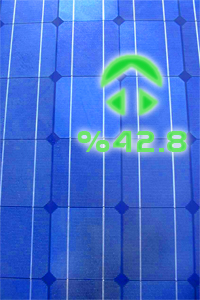Solar power has long been the Mercedes-Benz of the renewable energy industry: sleek, quiet, low-maintenance.
Yet like a Mercedes, solar energy is universally adored but prohibitively expensive for most people. A 4-kilowatt solar photovoltaic system costs about $34,000 without government rebates or tax breaks.
As a result, solar power accounts for well under 1% of U.S. electricity generation. Other alternative energy sources, such as wind, biomass and geothermal, are far more widely deployed.
The outlook for solar, though, is getting much brighter. A few dozen companies say advances in technology will let them halve the price of solar-panel installations in as little as three years. By 2014, solar-system prices will be competitive with conventional electricity when energy savings are figured in, Deutsche Bank (DB) says. And that’s without government incentives.
If that happens, solar panels would become common home and business appliances, says Brandon Owens of Cambridge Energy Research Associates.

Read the rest of this entry »








